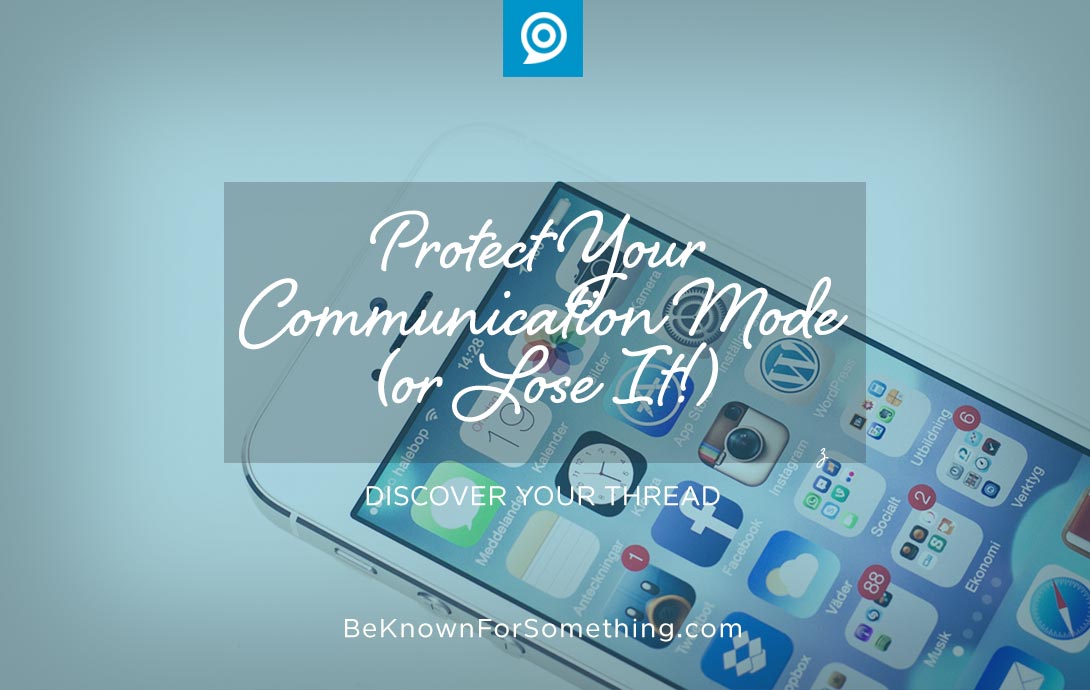Protect Your Communication Mode (or Lose It!)

Remember when we had to write letters in order to communicate? We’d send a letter, wait several days, then hopefully receive a reply in the mail. Then there was fax correspondence. Now email and texting. The modes keep changing (even when most of them are still around).
Which should you use?!
Maybe your go-to communication mode is the phone. You’ll call someone, leave a voicemail because few ever pickup, then hopefully within a couple of days you’ll get a return call.
We often choose a mode based on response time. For most, that means we choose between email, texting, and social media direct messaging. Occasionally we’ll still pick up the phone. Occasionally.
Everyone simply wants an audience to hear what’s on their mind and get a quick response.
With texting quickly becoming the favorite go-to mode of communication over email, be careful. If you abuse it, it will stop working as effectively.
Here are 5 tips for protecting your communication mode (especially texting):
- If the response can wait, use an alternate (slower) mode. There’s nothing worse than an interruptive text message that isn’t urgent. If the message doesn’t demand a quick reply, use another mode (such as email).
- Don’t use the fastest mode all the time. Remember that everything you communicate is usually more important to you than to the receiver of your message. Think about them when determining the communication mode. Don’t use the fastest, most irruptive method every time or people will slow down response time or ignore your information.
- Be clear and concise. Only require a simple response. Consider the mode of communication you’re using and write your message accordingly. Then edit it before you send it. Make sure your ask is also clear and doesn’t require a response that is difficult to construct on that mode. That usually means quickly and easily!
- If it needs to be archived, make sure it’s in a mode that’s easy to save. Text messaged information is often difficult to find later and complicated to archive in a longterm area. Emails are much simpler! If it needs to be saved or used later? Don’t text it.
- Know the appropriate standard for the mode of communication. Most people want a very short, urgent message for text. And expect only a few words, an emoji, a gif, or an easy to understand photo, Email can be a bit longer, but no one appreciates a novel being delivered via email. Edit. Edit. Edit! The shorter the paragraph the easier it is to read.
Want 25 Game-Changing Resolutions?
Related Posts

3 Church Leadership Skills That Transform Your Ministry
You didn’t accept a call to ministry just to maintain the status quo. You were called to lead to inspire,

How to Create a Church Marketing Strategy That Reaches Your Community
You’ve been called to lead a church that makes a difference in your city. That means developing a clear church

Top 10 Church Digital Marketing Strategies for 2026
What’s Changing, What’s Working, and What’s Next 2026 will be a year of rapid change for church digital marketing strategies

